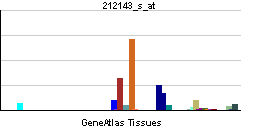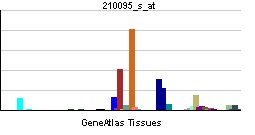IGFBP3
| Insulin-like growth factor binding protein 3 | |||||||||||
|---|---|---|---|---|---|---|---|---|---|---|---|
| Identifiers | |||||||||||
| Symbols | IGFBP3 ; BP-53; IBP3 | ||||||||||
| External IDs | Template:OMIM5 Template:MGI HomoloGene: 500 | ||||||||||
| |||||||||||
| RNA expression pattern | |||||||||||
 | |||||||||||
 | |||||||||||
| More reference expression data | |||||||||||
| Orthologs | |||||||||||
| Template:GNF Ortholog box | |||||||||||
| Species | Human | Mouse | |||||||||
| Entrez | n/a | n/a | |||||||||
| Ensembl | n/a | n/a | |||||||||
| UniProt | n/a | n/a | |||||||||
| RefSeq (mRNA) | n/a | n/a | |||||||||
| RefSeq (protein) | n/a | n/a | |||||||||
| Location (UCSC) | n/a | n/a | |||||||||
| PubMed search | n/a | n/a | |||||||||
Insulin-like growth factor binding protein 3, also known as IGFBP3, is a human gene.
This gene is a member of the insulin-like growth factor binding protein (IGFBP) family and encodes a protein with an IGFBP domain and a thyroglobulin type-I domain. The protein forms a ternary complex with insulin-like growth factor acid-labile subunit (IGFALS) and either insulin-like growth factor (IGF) I or II. In this form, it circulates in the plasma, prolonging the half-life of IGFs and altering their interaction with cell surface receptors. Alternate transcriptional splice variants, encoding different isoforms, have been characterized.[1]
References
Further reading
- Rajaram S, Baylink DJ, Mohan S (1998). "Insulin-like growth factor-binding proteins in serum and other biological fluids: regulation and functions". Endocr. Rev. 18 (6): 801–31. PMID 9408744.
- Ferry RJ, Cerri RW, Cohen P (1999). "Insulin-like growth factor binding proteins: new proteins, new functions". Horm. Res. 51 (2): 53–67. PMID 10352394.
- Schedlich LJ, Graham LD (2002). "Role of insulin-like growth factor binding protein-3 in breast cancer cell growth". Microsc. Res. Tech. 59 (1): 12–22. doi:10.1002/jemt.10173. PMID 12242693.
- Adham IM, Agoulnik AI (2005). "Insulin-like 3 signalling in testicular descent". Int. J. Androl. 27 (5): 257–65. doi:10.1111/j.1365-2605.2004.00481.x. PMID 15379965.